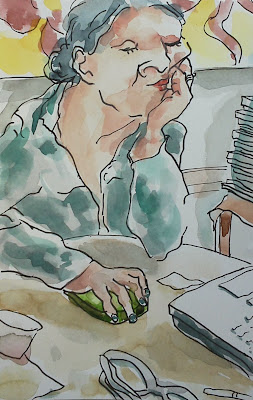Some things are best said in my native French.
Gustave Flaubert, to whom I owe my entire artistic existence put it this way:
"Soyez réglé dans votre vie et ordinaire comme un bourgeois, afin d'être violent et original dans vos œuvres."
Alas, this ideal of living like a bourgeois has eluded me my whole life and yet I like to think that in spite of my shortcomings I have been able to evoke some sort of wicked originality in my work.
My good friend David Schoffman does not suffer the same defect. He is fully invested in the world of hidebound, conservative conventionality.
But pace Gustave, his poor work lacks all sense of passionate duress. Comfortably situated in a small home on a quiet street he putters away in his studio making little innocuous baubles that flatter his collector's collective sense of unearned refinement.
His putative subject matter is some vague exegesis on the commodification of eroticism but what he's really after is a tasteful, illustrative, aphoristic rendering of sex at its most sentimental. People love it the way they love magazines, as a gloss of mild glamour under the cover Art. They are drawn to his work the way one is drawn to a puppy or to a tow-headed child with a gap tooth.
Living in Los Angeles has a way of soothing the artistic appetite. The urban tensions are spread so far apart and one is even denied the requisite cosmopolitan drama of weather.
So poor David lives like a bourgeois, draws like a bourgeois, paints like a bourgeois and even smells like a bourgeois.
At least he has a nice car.
















































.JPG)

